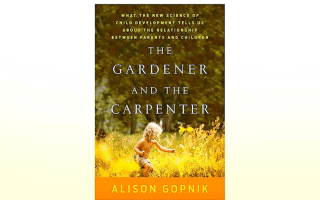It’s hard not to feel some level of anxiety right now if you stay up-to-date on current events. Regardless of our personal beliefs, financial situation, or political leanings, we can’t help but be on edge. On top of that, you have the everyday issues of being a parent who works with others. However, the funny thing is that anxiety is not necessarily a bad thing. It’s our alert system at work. Our bodies let us know when something doesn’t feel quite right, and that we should be vigilant. Once we recognize this, we can decide to do something about our discomfort or accept it—if there’s nothing we can do. Either way, there are proven strategies to use.
However, there are two things you shouldn’t do. The first is, don’t try to avoid your negative feelings. Pushing away your worries will only allow them to pile up and overwhelm you later. The second is, don’t try to force yourself to calm down. If you’ve ever been told to calm down but felt even more enraged, you can understand why this strategy doesn’t work either. So, here are some ways to deal with anxiety before it becomes a problem but first things first.
Know the difference between stress, anxiety and worry
These three words are sometimes used interchangeably but identifying exactly which you are dealing with will help you choose the right solutions. Anxiety is a feeling of fear, dread or general uneasiness. When we feel anxious, it can cause us to worry or think about what might go wrong when faced with the unknown. In other words, worrying takes place in our minds. On the other hand, stress is our physiological response to anxiety. It shows up in our bodies as aches and pains. According to Licensed Marriage and Family Therapist Emma MacAdam of Therapy in a Nutshell, we should target worry with cognitive interventions and target stress with interventions that calm the body. Of course, our minds and bodies are interconnected and do not work separately. The distinction merely allows us to tailor an intervention that is most effective.
Physical interventions for anxiety
MacAdams recommends first noticing where symptoms show up in the body and noting how they feel. You can either list them out loud or write them down. By naming each symptom out loud, you are acknowledging its existence. While it may seem like an inconsequential step, “name it to tame it” is a well-known strategy in mental health coined by Dr. Daniel Siegel in his influential book The Whole Brain Child. Afterward, do a few controlled breathing sets by inhaling normally to fill your belly and exhaling slowly. This activates your body’s internal healing mechanisms. Then you can choose one of the three sequences below for grounding and relaxing. Grounding exercises move your focus away from stressors while also allowing you to acknowledge them. As MacAdams explains, sometimes our anxiety is like a toddler and just wants our attention. After we acknowledge the toddler/anxiety it can stop screaming for us.
After completing one of these techniques, take a moment to notice how your body feels. Not every exercise resonates with everyone, so it’s helpful to note how each one of the sequences improves your well-being or not. And, if it doesn’t try a different exercise.
5, 4, 3, 2, 1 exercise
This grounding exercise engages the 5 senses. MacAdams suggests acknowledging things out loud for maximum effect. Here’s how this exercise works:
- Name 5 things that you can see. For example, you may see clouds, trees, the gum on the sidewalk, buildings, and other people if you’re outside.
- Name 4 things you can feel with your hands or body. You can touch your shirt sleeves, the keys on a keyboard, the leaves on a nearby plant, or the lint in your pockets.
- Name 3 things you can hear. Acknowledge the air conditioning blowing through the vents, a ticking clock, or cars passing by outside.
- Name 2 things you can smell. It’s ok to walk around to find something you can smell. Perhaps you just washed your hands or applied lotion. You can smell your hands, the coffee you’re drinking, or the potted plant nearby.
- Name 1 thing you can taste. Can you still taste your last meal? Are you sipping a drink? Can you still taste the toothpaste in your mouth? Any of these things can work.
Emotional freedom technique (EFT), also known as tapping
This sequence works well with kids and can be repeated until you feel a sense of calm. There are variations in this practice, but they all work similarly. Jessica Ortner, cofounder of The Tapping Solution, explains it well on her Youtube video if you’d rather watch an example. Here’s how this exercise works:
Begin by identifying your stress source and putting it into your setup statement. It can sound like this: “Even though I feel anxiety about an upcoming deadline, I accept myself.” We allow our bodies to work through our discomfort and release it by naming the concern. Now, start tapping the “karate chop” area on the side of your palm 7 times using the four fingertips of the opposite hand. Repeat the setup statement or a variation of the statement while following the numbered sequence below and tapping each pressure point 7 times with two fingertips. You can tap either side or both sides for numbers 1-3.
- eyebrow
- side of the eye
- below the eye
- under the nose
- crease between your lower lip and chin
- collarbone
- side of your chest, one palm length below your armpit
- top of your head
Tense and relax
This technique is beneficial for back and shoulder aches caused by stress and when you feel stressed about being stressed. It works by calling on you to lean into your anxiety to work through it rather than avoiding it or pressuring yourself to relax. Here’s how this exercise works:
Begin by identifying where the stress is in your body and tense up that area to relax it. For example, if the shoulders and back feel tense, tighten up that area even more. Bring your shoulders to your ears and bring your arms toward the body’s center while scrunching up your face. Hold this for 5 seconds. Then slowly release the hold.
Cognitive interventions for anxiety
When we worry, there’s a tendency to ruminate and overthink things in unhelpful ways. And every time we ruminate we build and strengthen pathways in our brain for this behavior. In other words, the problem worsens with practice. Instead, we want to train our minds to use more productive routes, work through negative feelings, and release them. To do this, we need to create space between our thoughts and the situation. Being able to separate our thoughts from ourselves and the problem empowers us to handle the situation better. Below are 3 techniques to help you create space and redirect your thoughts when you get stuck in a cycle of rumination.
Journaling or drawing your safe place
MacAdams explains that it’s common for us to imagine ourselves in dangerous situations. But we rarely give ourselves opportunities to imagine ourselves being safe. This exercise strengthens our ability to visualize and access the brain area that tells us we are safe. Here’s how it works:
Allow yourself at least 5 minutes to complete this practice. Take out your materials. If you’re drawing, have your markers, colored pencils, and paints on hand, along with your paper or canvas and any other materials you may need. Now, draw or describe in detail, if you’re journaling, a place where you feel safe and relaxed. The more information you can provide, the easier it will be for your brain to access this safe space. Do not focus on the quality of your work. It’s not important that what you’re drawing looks like what you intended. You’re not creating art. You’re building visual connections in your brain to feelings of safety. When you finish, note whether or not you feel safer.
5-minute mindful breathing exercise
This exercise brings you to the present. When we worry or ruminate, we usually think about the unknown and speculate about the future. However, dealing with the present is usually more manageable. Here’s how it works:
In this exercise, you sit in a comfortable seat with both feet on the floor. Soften your gaze by allowing your visual focus to drift to the periphery. Breath normally and notice your breath entering your body and exiting without manipulating it. While you’re paying attention to your breathing, other thoughts may enter your mind. This is normal and expected. Simply acknowledge them and bring your attention back to your breathing. Continue to do this without judgment for your thoughts or your ability to stay focused on your breathing. Continue for at least 5 minutes, then notice how you feel. Are you calmer? For a guided mindful breathing exercise, MacAdams has a video on Youtube.
Thought challenging
Our perceptions define our experiences. We free our minds to consider other interpretations when we can let go of negative thoughts. This exercise helps us consider things from multiple angles. And often, we end up with more factual alternatives. Here’s how it works:
This technique requires some time and consideration. It may also help to remind yourself that you aren’t your thoughts, and your thoughts are not reality. Ask yourself the following questions and write down your answers.
- Am I catastrophizing or overestimating the mishap or danger?
- Is there evidence that this thought is true?
- Is there evidence that this thought is not true?
- How would you respond to a friend with the same thought?
- What would a friend say to you?
- How many times has this happened in the past?
- Is it likely that this thought will happen?
- What is the worst that could happen?
- If it did happen, what could you do to handle the situation?
Don’t underestimate the basics of self-care
We cannot overemphasize how important it is to maintain a basic level of self-care when you are looking for ways to deal with anxiety. Things like getting enough sleep and eating a balanced diet of primarily whole, unprocessed foods can go a long way in helping you maintain calm and react rationally. Also, making physical exercise a daily practice helps to clear your mind and help you focus on the important tasks. Furthermore, limiting caffeine and alcohol will prevent mood swings. When your body is not getting its basic needs met, it’s harder to deal with hardships.







